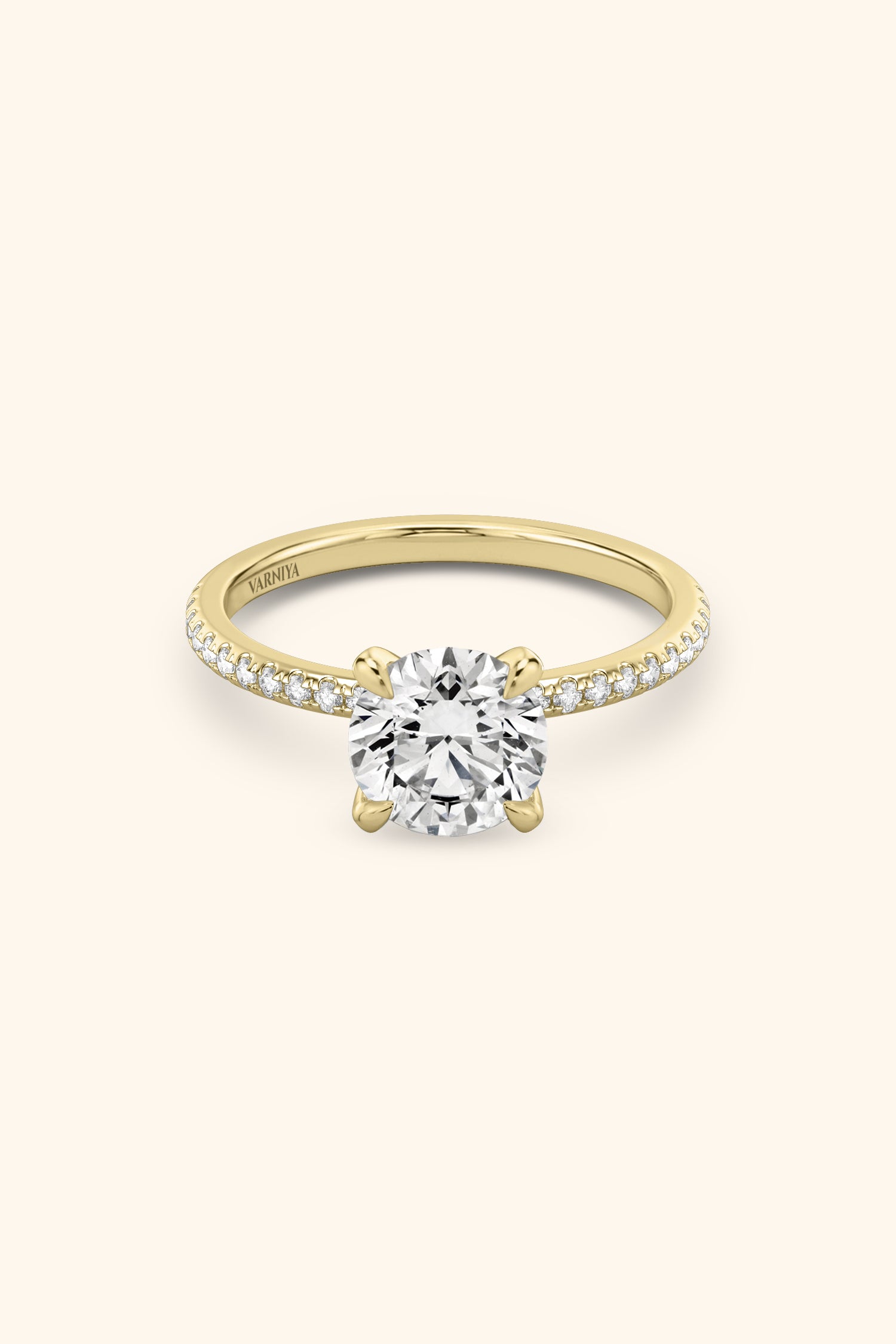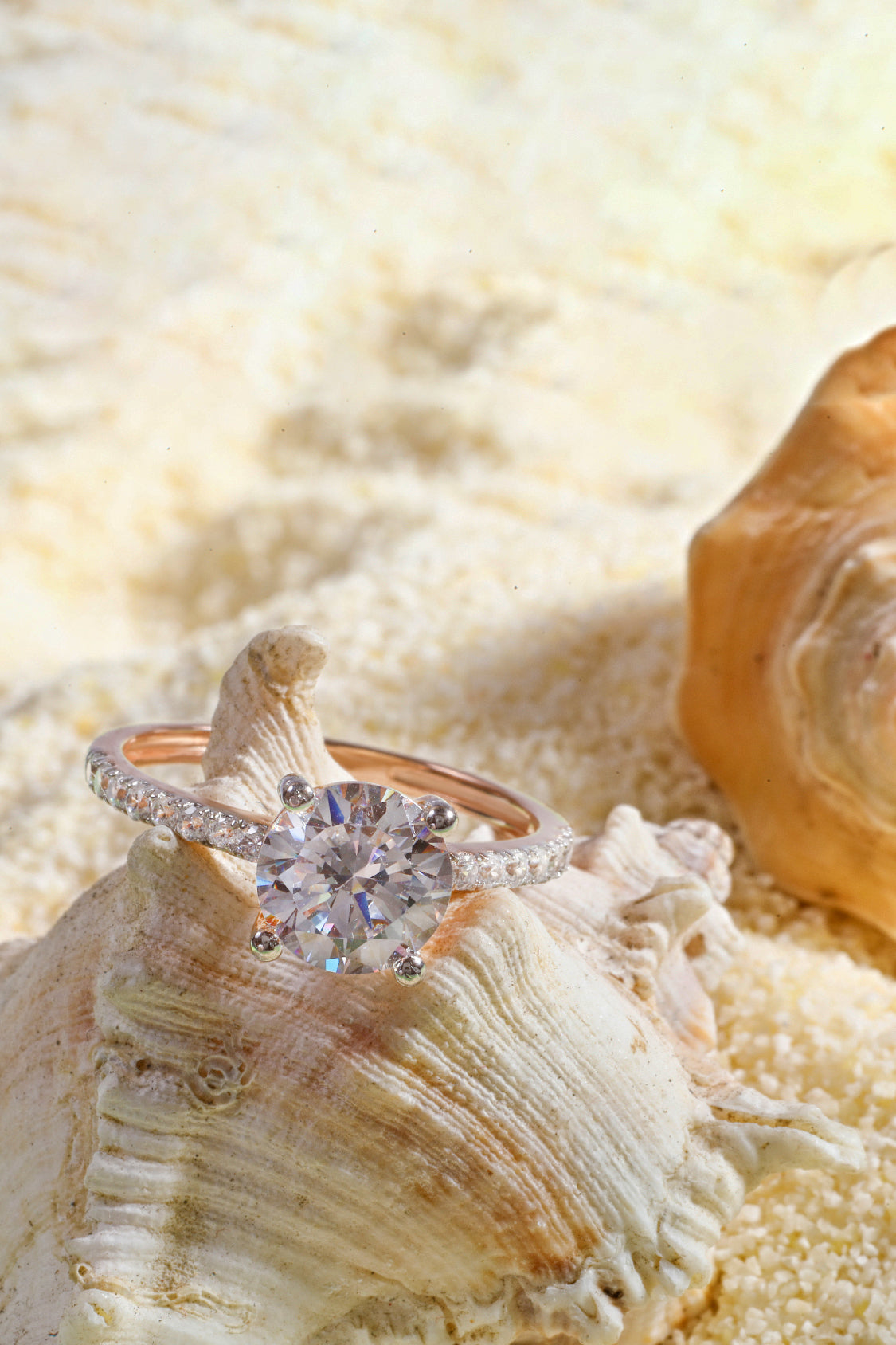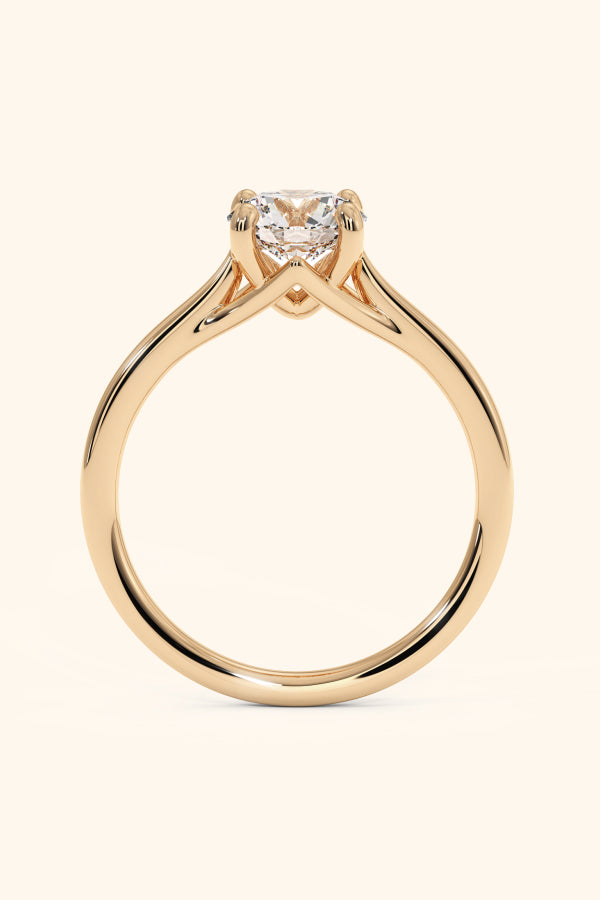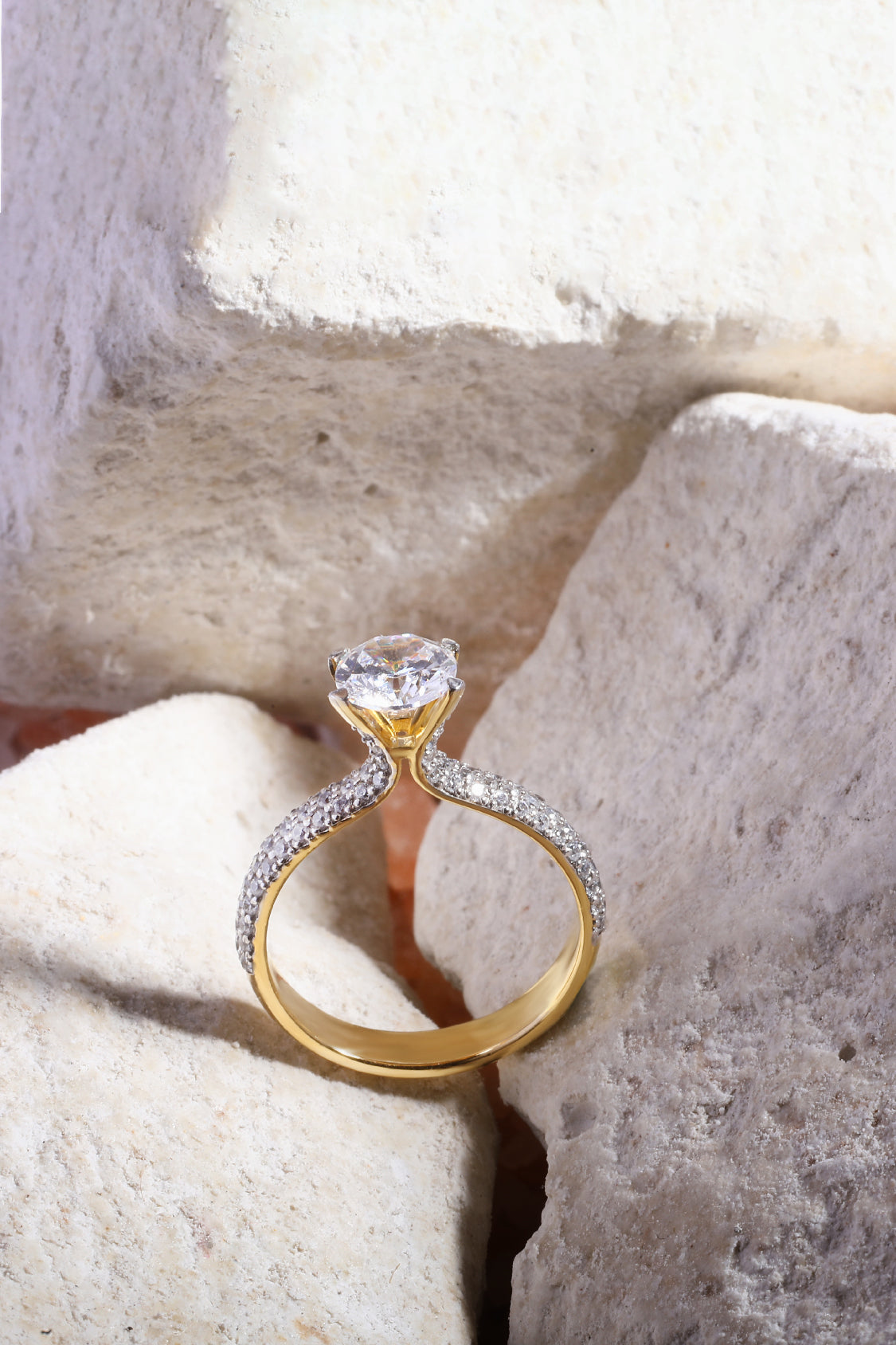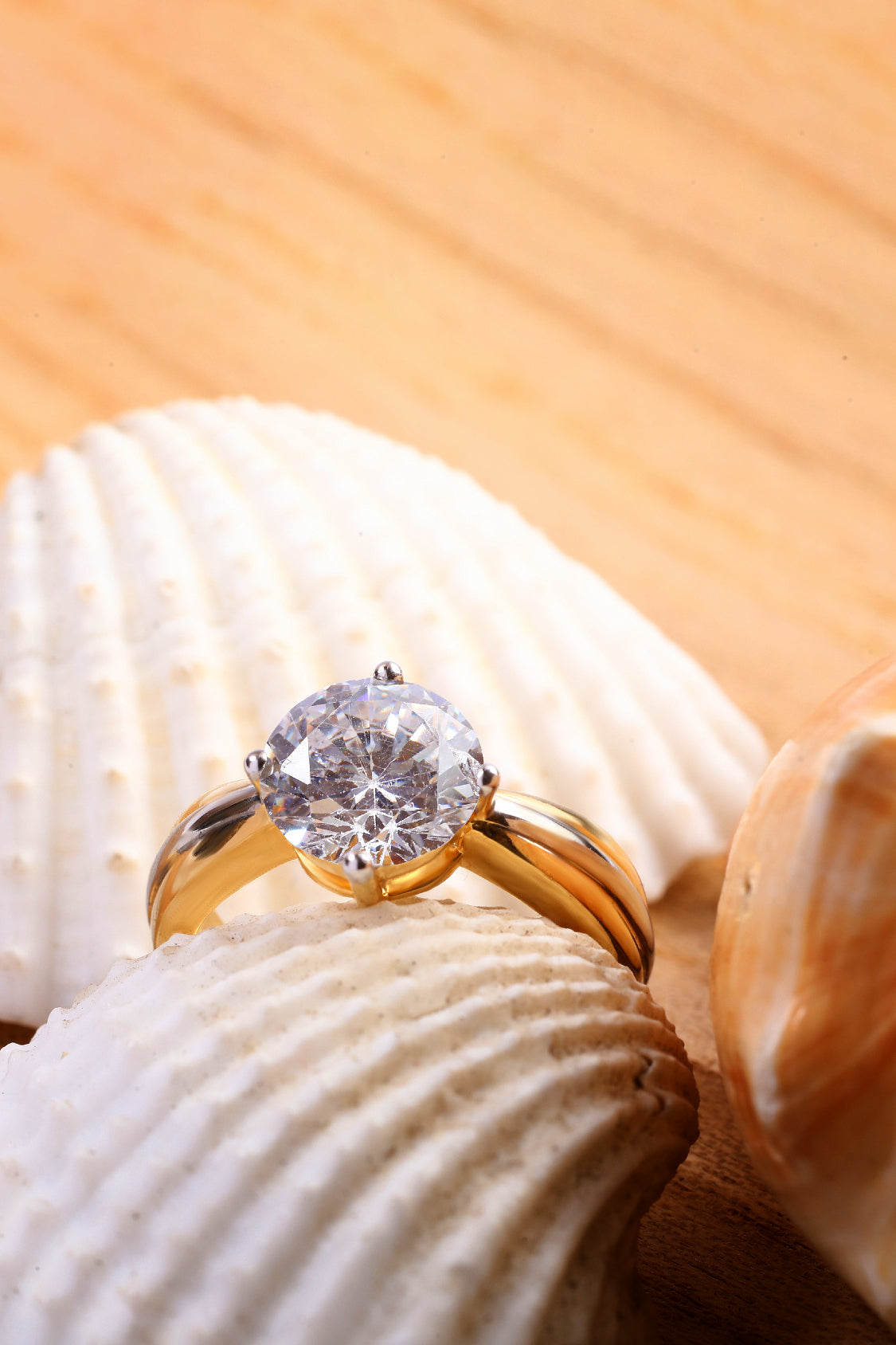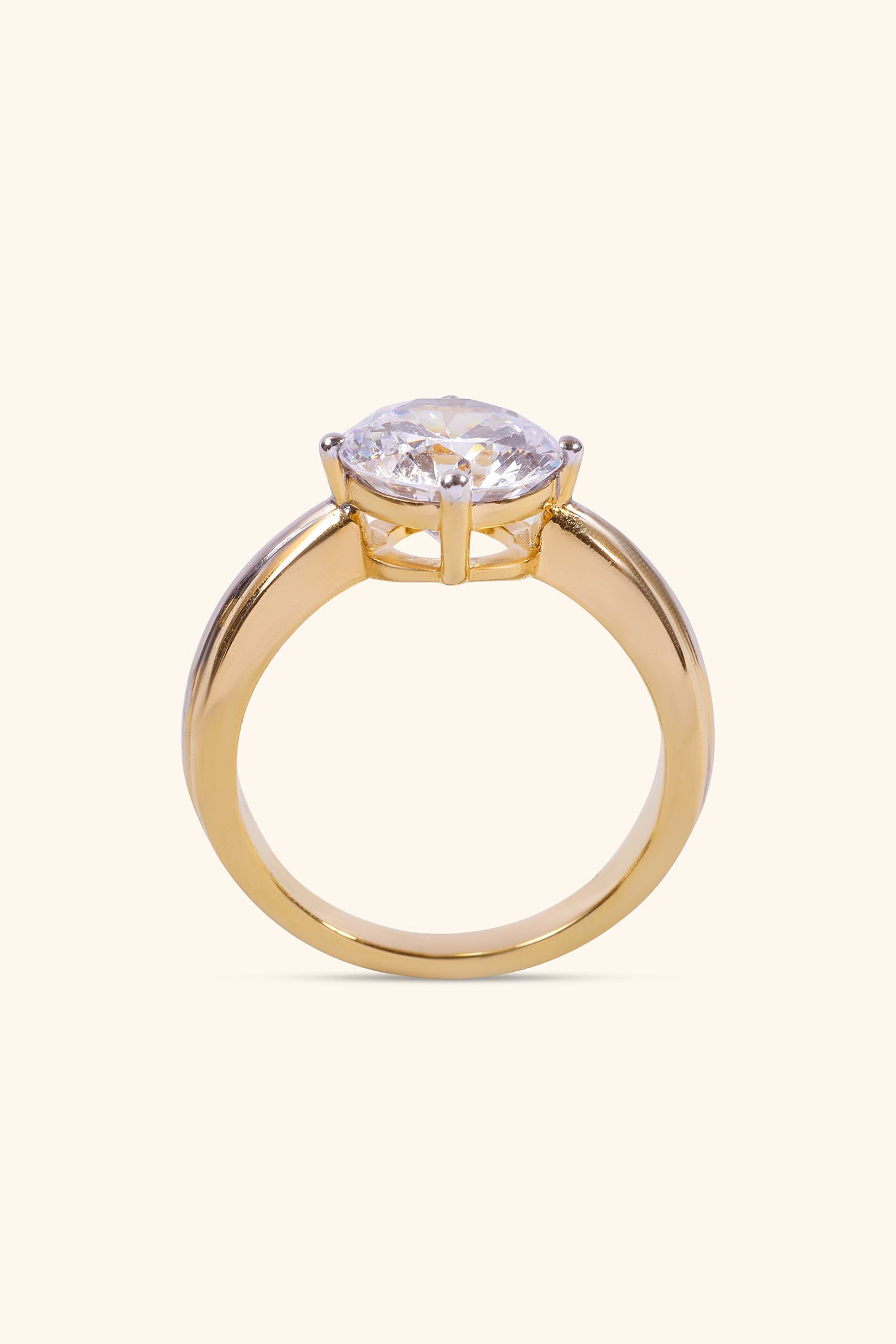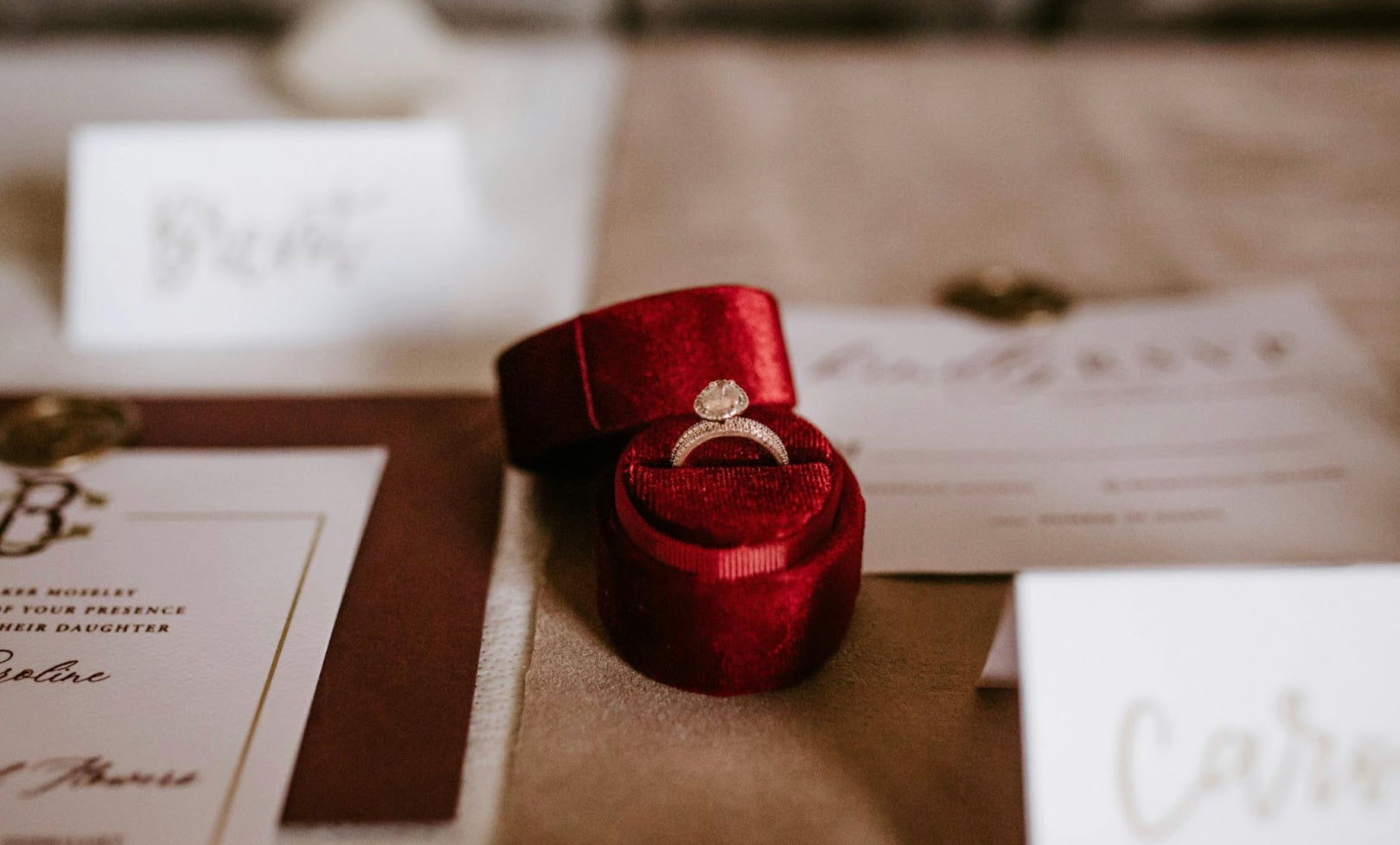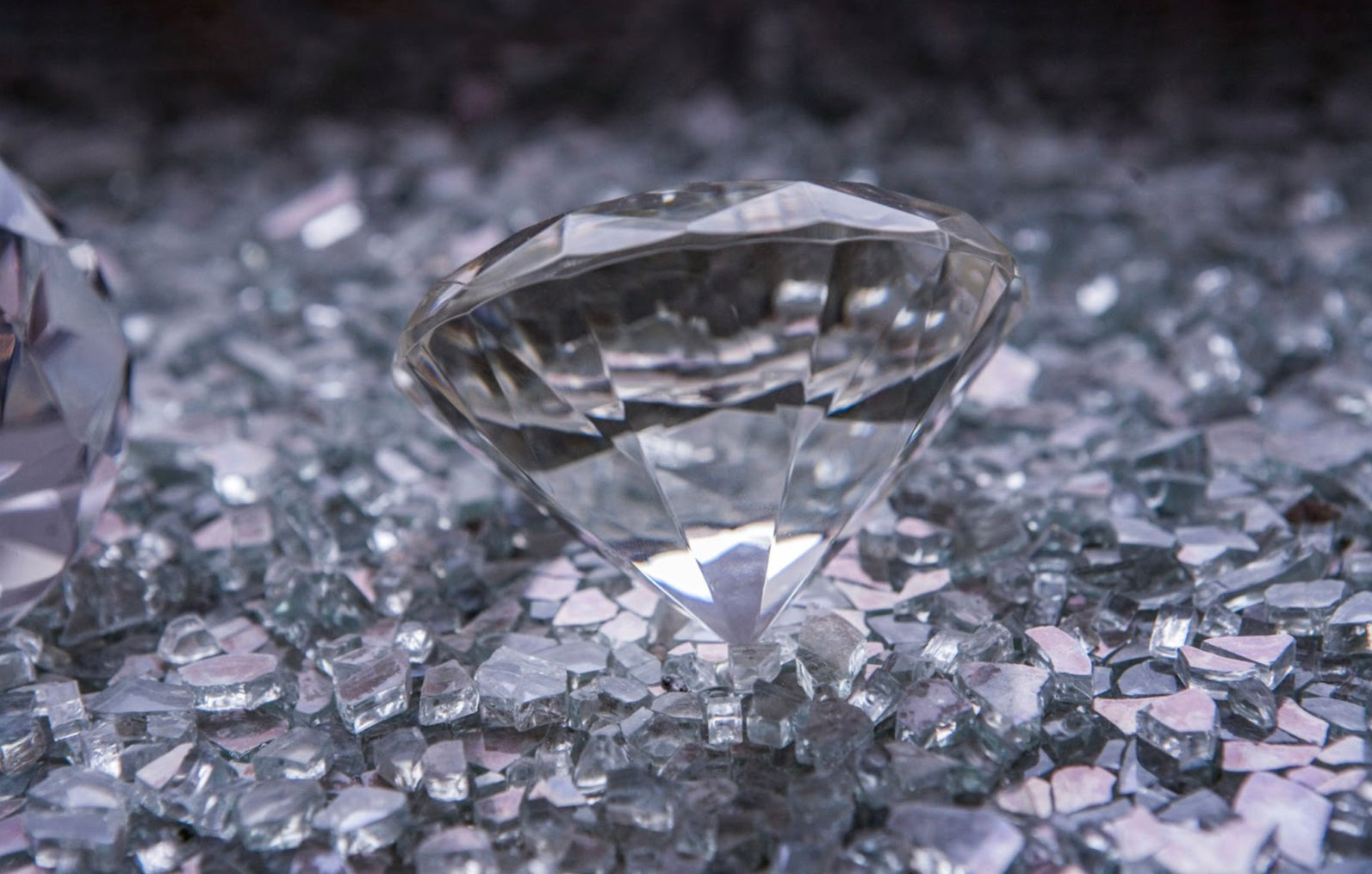
Lab-Grown Diamonds vs. Natural Diamonds: Price Comparison
Lab-grown diamonds vs. natural diamonds price gap. Find out which option gives you the best value for your budget.
Thinking about buying a diamond but unsure whether lab-grown or natural diamonds offer the best value? You’re not alone. The price gap between the two is staggering—lab-grown diamonds cost 50-70% less than mined diamonds of the same quality (Forbes, 2023).
But does a lower price mean less value? And what about resale potential, sustainability, and long-term worth? In this guide, we'll break down real pricing data, resale value, and ethical considerations so you can make an informed decision—without getting blinded by the sparkle.
What Determines a Diamond’s Price?
The diamond industry is evolving, with lab-created diamonds disrupting traditional pricing and production methods. Let's look at key factors that determine the pricing:
1. Rarity vs. Availability
Natural diamonds take billions of years to form under the earth. This makes them rare. The rarer something is, the higher the diamond price.
Lab-grown diamonds, on the other hand, are created in a lab in just a few weeks. This means they are more available and cost 50-70% less than natural diamonds (Forbes, 2023).
2. Cost of Production
Digging deep into the earth to find natural diamonds is expensive. Diamond mining requires heavy machinery, workers, and lots of resources. These costs make mined diamonds more expensive.
Lab-grown diamonds skip this process. They are made using high-pressure machines that mimic natural conditions. While this production process still requires energy, it is far cheaper than traditional diamond mining.
3. Market Demand and Perceived Value
People still see natural diamonds as a status symbol. Many believe they are more valuable simply because they come from the earth.
However, younger buyers are shifting toward sustainable alternatives like lab diamonds. They love the fact that these gems are more ethical and eco-friendly.
4. Pricing Trends Over Time
The price of natural diamonds has gone up over the years because of high demand and limited supply. However, the rise of lab-grown diamonds is changing the game.
Since more companies are producing lab-created diamonds, their cost difference is increasing. Experts predict that in five years, lab-grown diamonds will be even cheaper.
5. 4Cs (Cut, Clarity, Color, and Carat Weight)
The 4Cs play a huge role in diamond price:
-
Cut – A well-cut diamond sparkles more!
-
Clarity – Fewer imperfections mean a higher price.
-
Color – Colorless diamonds cost more.
-
Carat Weight – Bigger diamonds = higher prices.
6. Sustainability and Ethical Factors
Natural Diamonds
-
Mining harms the environment, causing soil erosion and deforestation.
-
Some diamonds, called blood diamonds, fund conflicts in certain countries.
-
Producing one carat of a mined diamond creates 5,800 pounds of waste (Stanford University, 2023).
Lab-Grown Diamonds
-
Eco-friendly with a lower carbon footprint.
-
No child labor or unethical sourcing issues.
-
Some brands use renewable energy, making them even greener.
7. Resale and Investment Value
If you want a diamond as an investment, natural diamonds are still the top choice. They have higher resale value because they are seen as rare and timeless.
Some buyers still prefer real diamonds for their perceived rarity and long-term investment potential. However, if you just want a beautiful stone for your engagement ring, a lab-grown diamond gives you better sentimental value.
Average Cost Difference Between Lab Created Diamonds and Mined Diamonds
| Carat Weight | Lab-Grown Diamond Price (Avg.) | Mined Diamond Price (Avg.) | Cost Difference (%) |
|---|---|---|---|
| 0.5 Carat | $600 - $1,000 | $1,200 - $2,500 | 50-60% cheaper |
| 1.0 Carat | $1,000 - $2,500 | $4,000 - $8,000 | 60-70% cheaper |
| 1.5 Carat | $2,500 - $4,500 | $8,000 - $15,000 | 65-70% cheaper |
| 2.0 Carat | $4,500 - $8,000 | $15,000 - $25,000 | 70% cheaper |
| 3.0 Carat | $8,000 - $15,000 | $25,000 - $50,000 | 70%+ cheaper |
Are Lab Created Diamonds Worth It? A Buyer’s Perspective
If you want a beautiful, affordable, and ethical diamond, lab-created diamonds are a great choice. If resale value matters more to you, natural diamonds might be better. The best diamond is the one that fits your budget and values.
What to Consider When Buying a Diamond Ring
1. Price vs. Value
Lab-grown diamonds vs. natural diamonds price—which is better? Lab diamonds are cheaper, but they still have the same beauty and sparkle. If you want to save money on an engagement ring, a lab-grown diamond is a cost-effective choice.
2. Quality and Appearance
Both lab-created diamonds and mined diamonds have the same chemical properties. Even experts need special tools to tell them apart. So, whether you choose lab-grown or natural diamonds, you get a stunning gem.
3. Resale and Investment
One big difference is resale value. Natural diamonds usually hold value better, making them a stronger investment. Lab-created diamonds, on the other hand, are more affordable but don’t have resell value.
4. Ethical and Environmental Impact
-
Diamond mining harms the environment. It destroys land and uses a lot of water.
-
Lab-grown diamonds have a lower carbon footprint and are considered a sustainable alternative.
Still deciding? Let Varniya help you find a lab-grown diamond that fits your budget and values without compromising on brilliance!
Buying Options for Engagement Rings
1. Varniya
Varniya specializes in lab-grown diamonds and offers a variety of engagement rings. Their lab-created diamonds are certified, conflict-free, and environmentally friendly.
Why Choose Varniya?
-
Affordable Prices – Get a 1-carat lab-grown diamond ring for almost 70% less than a natural diamond.
-
Sustanable Alternative – No diamond mining, making it an eco-friendly option.
-
Reputable Jewelers – Varniya ensures high-quality grading for every diamond.
Top Products from Varniya:
-
Classic Solitaire Lab-Grown Diamond Ring – A timeless design with a round brilliant-cut diamond.
-
Princess-Cut Lab Diamond Engagement Ring – A stylish ring with modern elegance.
-
Custom Lab-Grown Diamond Bands – Perfect for those who want a personalized touch.
2. GIVA
GIVA is known for its modern, stylish engagement rings. They offer both lab-created and naturally mined diamonds, so you can choose what fits your preference.
Why Choose GIVA?
-
Wide Selection – From solitaire diamond rings to custom designs.
-
High-Quality Stones – Whether you pick lab diamonds or mined diamonds, GIVA ensures top quality.
-
Best Value – Their diamond price is competitive, giving you the best for your money.
Top Products from GIVA:
-
Oval-Cut Lab Diamond Engagement Ring – Elegant and perfect for modern styles.
-
Halo Diamond Ring with Natural Center Stone – A mix of natural and lab-grown diamonds.
-
Vintage-Inspired Diamond Band – Perfect for those who love classic beauty.
3. Emori
If you love sleek, minimalist rings, Emori is a great choice. They offer lab-grown diamonds and natural diamonds in elegant settings.
Why Choose Emori?
-
Affordable Pricing – Their lab-created diamonds cost 50-70% less than mined diamonds.
-
Timeless Designs – Perfect for those who love classic styles.
-
Sustainable Alternative – They use ethically sourced materials, reducing the carbon footprint.
Top Products from Emori:
-
Pear-Shaped Solitaire Diamond Ring – A unique and modern design.
-
Lab-Grown Diamond Infinity Ring – A perfect symbol of eternal love.
-
Emerald-Cut Minimalist Diamond Band – A simple yet elegant choice.
4. Espira Gems
Want a ring that stands out? Espira Gems specializes in custom engagement rings with both lab diamonds and mined diamonds.
Why Choose Espira Gems?
-
Customization – Design your own ring with identical carat weight but at a lower price.
-
High-Quality Stones – They follow a strict grading system to ensure clarity and brilliance.
-
Reputable Jewelers – Well-known for their craftsmanship and attention to detail.
Top Products from Espira Gems:
-
Custom-Made Diamond Halo Ring – Design your dream ring from scratch.
-
Lab-Grown Diamond Eternity Band – A stunning choice for weddings or anniversaries.
-
Heart-Shaped Lab Diamond Ring – A romantic and unique piece.
5. Dravya Diamonds
Dravya Diamonds is perfect for those looking for luxury engagement rings with premium diamonds. They offer both lab-created diamonds and natural diamonds, letting you choose what fits best.
Why Choose Dravya Diamonds?
-
Exclusive Collections – Stunning, high-end designs for diamond rings.
-
Investment Value – Their natural diamonds retain resale value over time.
-
Best of Both Worlds – Choose between lab diamonds vs. mined diamonds based on your preference.
Top Products from Dravya Diamonds:
-
Luxury Radiant-Cut Diamond Ring – A high-end statement piece.
-
Round Brilliant-Cut Engagement Ring – A timeless classic.
-
Three-Stone Natural Diamond Ring – Represents past, present, and future love.
Ethical Concerns: Human-Made vs. Naturally Mined Diamonds
Many people wonder, are lab-grown diamonds real? The answer is yes—they have the same physical and chemical properties as natural diamonds.
1. Environmental Impact: Mining vs. Lab Creation
-
Natural Diamonds: Mining causes deforestation, soil erosion, and disrupts ecosystems. A single carat of mined diamond can result in up to 100 square feet of land disturbance and 5,800 pounds of mineral waste.
-
Lab-Grown Diamonds: Produced in controlled environments, significantly reducing environmental footprint. However, they require high energy consumption, though renewable sources are being increasingly used.
2. Human Rights and Labor Issues
-
Natural Diamonds: Some diamonds, especially "blood diamonds," are linked to child labor, forced labor, and conflict funding in war-torn regions.
-
Lab-Grown Diamonds: Ethically produced with no involvement in exploitative labor practices, making them a conflict-free alternative.
3. Carbon Footprint and Sustainability
-
Natural Diamonds: Extracting diamonds from deep mines releases substantial greenhouse gases, consuming thousands of gallons of water per carat.
-
Lab-Grown Diamonds: While energy-intensive, they have a lower carbon footprint than mining and are increasingly made using renewable energy.
4. Supply Chain Transparency
-
Natural Diamonds: Many companies now follow the Kimberley Process, but loopholes still allow unethical diamonds into the market.
-
Lab-Grown Diamonds: Easier to trace origins, ensuring buyers get ethically sourced gems.
5. Economic Impact on Mining Communities
-
Natural Diamonds: Provide employment to millions in countries like Botswana, South Africa, and Russia. A decline in mining could affect these economies.
-
Lab-Grown Diamonds: Create jobs in tech-driven production facilities but may not fully replace the large-scale employment mining provides.
In recent years, more diamonds sold have been lab-grown, reflecting a shift toward ethical and cost-effective alternatives.
6. Consumer Perception and Ethical Choices
-
Natural Diamonds: Despite ethical concerns, many still see them as a status symbol, believing they carry more prestige and tradition.
-
Lab-Grown Diamonds: Growing in acceptance, especially among eco-conscious and younger buyers who prioritize sustainability and ethical sourcing.
Want a guilt-free diamond that shines with ethical beauty? Varniya offers stunning, sustainable options just for you!
How to Make an Informed Decision on Your Lab-Grown Diamond Purchase
1. Compare Cost Savings vs. Value Retention
-
Lab-grown diamonds are 50-70% cheaper than natural diamonds of the same quality.
-
However, resale value is lower compared to natural diamonds due to ongoing price drops.
2. Look for Proper Certification
-
Always buy from reputable sellers offering IGI (International Gemological Institute) or GIA (Gemological Institute of America) certification.
-
These certifications ensure authenticity, quality, and transparency in grading.
3. Prioritize the 4Cs: Cut, Clarity, Color, and Carat
-
A well-cut diamond sparkles more, even in lower carat weights.
-
Lab diamonds often have higher clarity since they are grown in controlled environments.
-
Choose a balance between size and quality—bigger is not always better.
4. Check the Brand’s Reputation and Ethics
-
Buy from trusted jewelers with transparent sourcing policies.
-
Opt for brands using renewable energy in diamond production for a more sustainable choice.
-
Read customer reviews and compare return policies before making a purchase.
5. Consider Customization Options
-
Many brands offer custom engagement rings with lab-grown diamonds.
-
Choose settings, metals, and diamond shapes that fit your style and budget.
6. Verify Warranty and Return Policy
-
Some brands offer lifetime warranties and upgrade options.
-
Ensure the store provides easy returns if you are not satisfied with your purchase.
Choosing between lab-grown diamonds and natural diamonds comes down to your priorities. If you value tradition, resale value, and the idea of owning a rare stone, a natural diamond might be the right choice. However, if you prioritize affordability, sustainability, and ethical sourcing, lab-grown diamonds offer the same brilliance at a fraction of the price.
Ultimately, the best diamond is the one that fits your budget, values, and personal style. Whether you go for a natural or lab-grown diamond, make sure to choose a reputable jeweler that offers certification, quality assurance, and customization options.


